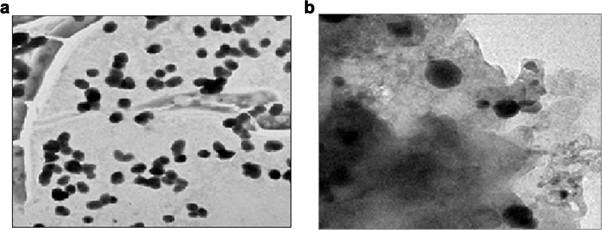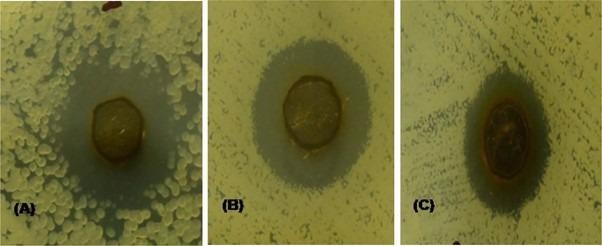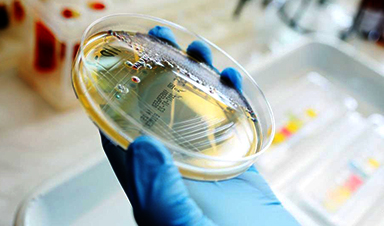A bottom-up approach to produce copper oxide (CuO) nanoparticles on hydrophilic graphene oxide (GO) nanosheets has been employed in the latest research published in Journal of Material Science: Materials in Medicine.
The CuO/GO nanocomposite was created by combining two different predecessors, copper nitrate and citric acid, with occasional mixing of GO solutions.
Importance of Copper Oxides
Copper Oxide (CuO) nanoparticles have experienced an accelerated surge in many potential applications due to their direct bandgap nature, strong electrochemical performance, and cheaper cost of manufacture. Cuprous Oxide (Cu2O) and Cupric Oxides (CuO) are the two most common forms found in nature, comprising the two most important stoichiometric compounds in the CuO systems as a whole.
They have a broad array of applications, including hydrogen gas sensors, volatile organic molecules, hydrolysis, and, most notably, solar photovoltaic cells. Because of their extensive applicability in electrolytic and smart appliances, the production of CuO nanoparticles in the laboratory is critical.
Limitations of Copper Oxide Nanocomposites
Although the usage of copper oxide nanoparticles (CuO NPs) in many applications has expanded tremendously, there are numerous restrictions to their use.
The complications that arise as a result of misinterpreting the toxicity are based on the fact that CuO nanoparticles bind, interact with living cells, and cause a change in surface properties. The toxic effects of nano-sized CuO on neurons cause cognitive dysfunction, which affects memory and learning aspects. CuO NPs has a negative impact on the structure of many organs, as observed in histological examinations.

HR-TEM of CuO/GO nanocomposites indicating the CuO deposits over GO sheets (indicated by arrows) © Biswas, K. et al., (2021)
Importance of Graphene Oxide Nanosheets
GO-based nano screens have found extensive applications in gas barrier nanocomposites due to their high dimensional nanosheet composition, which provides remarkable insulative properties to most gases. Because of their higher moisture permeability, GO nanosheet films are widely considered as promising nanomaterials for water treatment applications.
The orientated GO nanosheets inflate when water enters between them because GO films have a significant attraction for water. In addition, due to their shape and great chemical stability, graphene derivatives show potential for anti-corrosive polymer coatings.
Research Findings regarding Antibacterial Activity
The antimicrobial property of CuO/GO nanocomposite was investigated preliminary using the agar well diffusion (AWD) technique. The latest research reveals that CuO nanoparticles demonstrated extensive antimicrobial properties against Gram-positive and Gram-negative pathogens.
It was discovered that nanomaterials penetrate the cell wall of bacteria due to their sticking capability, consequently affecting the integrity of the structure of the bacterial surface and resulting in permeation into the bacteria, resulting in cidal activity of the bacterial cells.
The penetrated nanoparticles inside the bacteria generate net reactions with essential biomolecules like proteins and nucleic acids, resulting in the generation of reactive oxygen species (ROS) radicals, which cause cellular stability deterioration and death of hazardous cells.

Antibacterial activity in agar well diffusion method (A) E. coli (B) S. aureus (C) P. aeruginosa. © Biswas, K. et al., (2021)
Findings Regarding Antioxidant Activity
The antioxidant properties of nanocomposites were evaluated. CuO/GO nanocomposites were added to the culturing of A-431 cancerous cells at varying doses (0.97 nM to 1000 nM) for 24 hours at 37 °C. It was discovered that when the concentration of the CuO/GO nanocomposites increased, the proportion of viable cancer cells appeared to decrease concurrently.
Results demonstrated that ROS generation during cell functions, which occurs after being exposed to the test sample, plays an important part in the mechanism of cytotoxicity of CuO/GO nanocomposites in epidermoid cancer. For CuO/GO nanocomposite, the IC50 value was 44.86 ± 1.74 μg/ml, indicating significant antioxidant potential.
Antioxidant activity of CuO/GO nanocomposite in terms of radical scavenging activity (A) DPPH and (B) ABTS.
In short, when evaluated in-vitro, the nanocomposites showed great antibacterial and antioxidant ramifications, making it part of the nanocomposites’ therapeutic action. The produced nanocomposites had an average particle size of around 20 nm, which was large enough to evoke biological activity when evaluated. These properties open doors to further evaluate their applications for various purposes.
News
Scientists Unlock a New Way to Hear the Brain’s Hidden Language
Scientists can finally hear the brain’s quietest messages—unlocking the hidden code behind how neurons think, decide, and remember. Scientists have created a new protein that can capture the incoming chemical signals received by brain [...]
Does being infected or vaccinated first influence COVID-19 immunity?
A new study analyzing the immune response to COVID-19 in a Catalan cohort of health workers sheds light on an important question: does it matter whether a person was first infected or first vaccinated? [...]
We May Never Know if AI Is Conscious, Says Cambridge Philosopher
As claims about conscious AI grow louder, a Cambridge philosopher argues that we lack the evidence to know whether machines can truly be conscious, let alone morally significant. A philosopher at the University of [...]
AI Helped Scientists Stop a Virus With One Tiny Change
Using AI, researchers identified one tiny molecular interaction that viruses need to infect cells. Disrupting it stopped the virus before infection could begin. Washington State University scientists have uncovered a method to interfere with a key [...]
Deadly Hospital Fungus May Finally Have a Weakness
A deadly, drug-resistant hospital fungus may finally have a weakness—and scientists think they’ve found it. Researchers have identified a genetic process that could open the door to new treatments for a dangerous fungal infection [...]
Fever-Proof Bird Flu Variant Could Fuel the Next Pandemic
Bird flu viruses present a significant risk to humans because they can continue replicating at temperatures higher than a typical fever. Fever is one of the body’s main tools for slowing or stopping viral [...]
What could the future of nanoscience look like?
Society has a lot to thank for nanoscience. From improved health monitoring to reducing the size of electronics, scientists’ ability to delve deeper and better understand chemistry at the nanoscale has opened up numerous [...]
Scientists Melt Cancer’s Hidden “Power Hubs” and Stop Tumor Growth
Researchers discovered that in a rare kidney cancer, RNA builds droplet-like hubs that act as growth control centers inside tumor cells. By engineering a molecular switch to dissolve these hubs, they were able to halt cancer [...]
Platelet-inspired nanoparticles could improve treatment of inflammatory diseases
Scientists have developed platelet-inspired nanoparticles that deliver anti-inflammatory drugs directly to brain-computer interface implants, doubling their effectiveness. Scientists have found a way to improve the performance of brain-computer interface (BCI) electrodes by delivering anti-inflammatory drugs directly [...]
After 150 years, a new chapter in cancer therapy is finally beginning
For decades, researchers have been looking for ways to destroy cancer cells in a targeted manner without further weakening the body. But for many patients whose immune system is severely impaired by chemotherapy or radiation, [...]
Older chemical libraries show promise for fighting resistant strains of COVID-19 virus
SARS‑CoV‑2, the virus that causes COVID-19, continues to mutate, with some newer strains becoming less responsive to current antiviral treatments like Paxlovid. Now, University of California San Diego scientists and an international team of [...]
Lower doses of immunotherapy for skin cancer give better results, study suggests
According to a new study, lower doses of approved immunotherapy for malignant melanoma can give better results against tumors, while reducing side effects. This is reported by researchers at Karolinska Institutet in the Journal of the National [...]
Researchers highlight five pathways through which microplastics can harm the brain
Microplastics could be fueling neurodegenerative diseases like Alzheimer's and Parkinson's, with a new study highlighting five ways microplastics can trigger inflammation and damage in the brain. More than 57 million people live with dementia, [...]
Tiny Metal Nanodots Obliterate Cancer Cells While Largely Sparing Healthy Tissue
Scientists have developed tiny metal-oxide particles that push cancer cells past their stress limits while sparing healthy tissue. An international team led by RMIT University has developed tiny particles called nanodots, crafted from a metallic compound, [...]
Gold Nanoclusters Could Supercharge Quantum Computers
Researchers found that gold “super atoms” can behave like the atoms in top-tier quantum systems—only far easier to scale. These tiny clusters can be customized at the molecular level, offering a powerful, tunable foundation [...]
A single shot of HPV vaccine may be enough to fight cervical cancer, study finds
WASHINGTON -- A single HPV vaccination appears just as effective as two doses at preventing the viral infection that causes cervical cancer, researchers reported Wednesday. HPV, or human papillomavirus, is very common and spread [...]





















